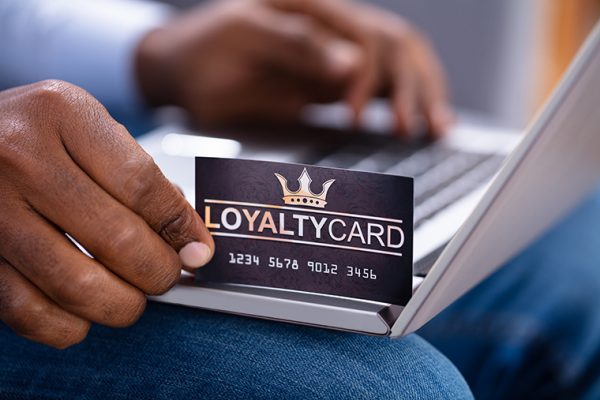Yulia Nevskaya’s first foray into the “World of Warcraft” started one evening at 7 p.m. She created an avatar to represent her in the online video game and set off to explore another land.
“It’s like another Earth. It looked like paradise,” Nevskaya said. “I was completely immersed.”
The next thing she knew, it was 4 a.m.

Nevskaya is an assistant professor of marketing at Washington University in St. Louis’ Olin Business School who studies, among other things, how consumers form habits. Her recent research used data that a bot gleaned from World of Warcraft, a massively popular, multiplayer role-playing computer game set in a fantasy universe.
Blizzard Entertainment launched the game in 2004, and within seven years it had more than 10 million subscribers worldwide. A user in character in World of Warcraft spends, on average, 12.5 hours per week playing the game, and more than 53 million people in the U.S. played online games at least once a month in 2016, for example.
The study emerges against a backdrop of societal concern over the overuse of online products and screens, including games and beyond.
Nevskaya and co-author Paulo Albuquerque of INSEAD in France focused their investigation on three main actions that the game developer has at its disposal to manage consumers’ use of the game: redesigning content and in-game reward schedules, sending notifications to gamers, and imposing time limits on gameplay. In all, they analyzed a random sample of 402 gamers and nearly 15,000 gaming sessions.
They discovered this: When a firm changes its game’s rewards schedule and also limits how long gamers can play in a sitting, the firm can actually make more money — and people devote a smaller share of their time on gaming.
“It’s a win-win outcome for both the firm and consumers,” Nevskaya said.
“Those actions led to higher revenues and a smaller share of people’s time devoted to gaming, curbing potentially excessive use of the product.”
The Journal of Marketing Research published their paper “How Should Firms Manage Excessive Product Use? A Continuous-Time Demand Model to Test Reward Schedules, Notifications, and Time Limits” in March.
The researchers found gamers’ slower consumption of content led to an increase in their long-term engagement with the product, which is based on subscriptions. At the time of the research, subscription fees were about 50 cents a day on a weekly or monthly automated payment plan.
“What’s good for the consumer is not necessarily bad for the company,” Nevskaya said.
Notifications might reinforce habit
Nevskaya and Albuquerque built an empirical model that mimics how consumers make choices so they could learn about gamers’ decisions — such as when to start and stop playing. Their approach allowed them to study consumers’ responses to product design, notifications and rewards over time, as well as to identify people who display signs of habitual gaming. According to the study, more than two-thirds of gamers exhibit signs of habitual gaming with, on average, 100.8 minutes in every 24-hour period.
The data were collected by a software program that logged onto the game server every 5 to 10 minutes. It recorded gamers’ avatars present on the server at the moment, as well as their current experience level and the content area in which they were playing.
Yes, they found that altering in-game reward schedules and imposing time limits leads to shorter gaming sessions and longer subscriptions. But they also learned that notifications saying players should take a break don’t help.
Here’s the rub: Because a suggestion to take a break may arrive at a time when a gamer is not yet satiated with a gaming session and is in a “hot habit state,” in Nevskaya’s terms, it also may motivate the gamer to return quickly to the game — and reinforce the gaming habit. Notifications lead to a pattern of shorter but more frequent sessions, resulting in a significant increase in active gaming time for a large group of gamers, the authors discovered.
“Our paper addresses the important question of how to curb excessive screen usage, which has been a frequent concern among public policymakers,” Nevskaya said.
Gaming disorder
Since 2014, the researchers note, the World Health Organization (WHO) has been evaluating the public health implications of excessive use of the internet, computers, smartphones and other devices. Last year, the WHO included “gaming disorder” in the 11th edition of the International Classification of Diseases as a clinically recognizable and significant syndrome when “the pattern of gaming behavior is of such a nature and intensity that it results in marked distress or significant impairment in personal, family, social, educational or occupational functioning.”
With about $19.9 billion in sales in 2016 worldwide, the online video gaming industry especially benefits from new technologies that allow almost-constant online connectivity. Online and mobile games and social media platforms have spent significant resources to increase product use through customized content, frequent promotions and virtual rewards, the authors note.
“‘Gamification’ of products is a common practice, which makes understanding of how consumers react to game-like product features increasingly important,” they write.
“We’re not claiming that gaming is harmful. It can be a wonderful pastime,” Nevskaya said. “But it’s potentially harmful when enjoyed in excess.”
As a marketing expert, she said she feels a responsibility to consumers.
“We can agree that marketing has become very sophisticated” in large part because of the massive troves of data now available to companies, she said. “Academics as well as responsible businesses should help consumers navigate the field safely.”
Games like World of Warcraft are a goldmine of information for marketing professors such as Yulia Nevskaya at Olin Business School. (2015 video)


